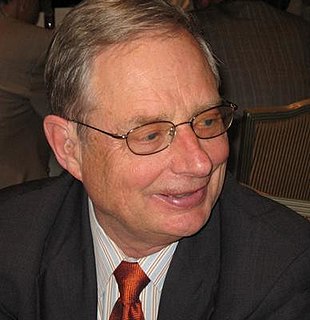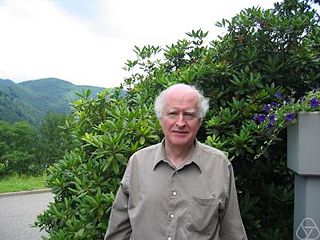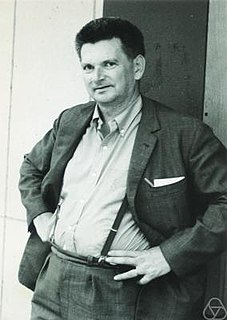 W
WMichael Aizenman is an American-Israeli mathematician and a physicist at Princeton University, working in the fields of mathematical physics, statistical mechanics, functional analysis and probability theory.
 W
WArmand Borel was a Swiss mathematician, born in La Chaux-de-Fonds, and was a permanent professor at the Institute for Advanced Study in Princeton, New Jersey, United States from 1957 to 1993. He worked in algebraic topology, in the theory of Lie groups, and was one of the creators of the contemporary theory of linear algebraic groups.
 W
WPhillip Augustus Griffiths IV is an American mathematician, known for his work in the field of geometry, and in particular for the complex manifold approach to algebraic geometry. He was a major developer in particular of the theory of variation of Hodge structure in Hodge theory and moduli theory. He also worked on partial differential equations, coauthored with Shiing-Shen Chern, Robert Bryant and Robert Gardner on Exterior Differential Systems.
 W
WWolfgang Hackbusch is a German mathematician, known for his pioneering research in multigrid methods and later hierarchical matrices, a concept generalizing the fast multipole method. He was a professor at the University of Kiel and is currently one of the directors of the Max Planck Institute for Mathematics in the Sciences in Leipzig.
 W
WHarry Kesten was an American mathematician best known for his work in probability, most notably on random walks on groups and graphs, random matrices, branching processes, and percolation theory.
 W
WLászló Lovász is a Hungarian-American mathematician and professor emeritus at Eötvös Loránd University, best known for his work in combinatorics, for which he was awarded the 2021 Abel Prize jointly with Avi Wigderson. He was the president of the International Mathematical Union from 2007 to 2010 and the president of the Hungarian Academy of Sciences from 2014 to 2020.
 W
WYuri Ivanovich Manin is a Russian mathematician, known for work in algebraic geometry and diophantine geometry, and many expository works ranging from mathematical logic to theoretical physics. Moreover, Manin was one of the first to propose the idea of a quantum computer in 1980 with his book Computable and Uncomputable.
 W
WJohn Norman Mather was a mathematician at Princeton University known for his work on singularity theory and Hamiltonian dynamics. He was descended from Atherton Mather (1663–1734), a cousin of Cotton Mather. His early work dealt with the stability of smooth mappings between smooth manifolds of dimensions n and p. He determined the precise dimensions (n,p) for which smooth mappings are stable with respect to smooth equivalence by diffeomorphisms of the source and target.
 W
WJürgen Kurt Moser was a German-American mathematician, honored for work spanning over four decades, including Hamiltonian dynamical systems and partial differential equations.
 W
WAbraham Robinson was a mathematician who is most widely known for development of non-standard analysis, a mathematically rigorous system whereby infinitesimal and infinite numbers were reincorporated into modern mathematics. Nearly half of Robinson's papers were in applied mathematics rather than in pure mathematics.
 W
WRené Frédéric Thom was a French mathematician. He made his reputation as a topologist, moving on to aspects of what would be called singularity theory; he became world-famous among the wider academic community and the educated general public for one aspect of this latter interest, his work as founder of catastrophe theory. He received the Fields Medal in 1958.